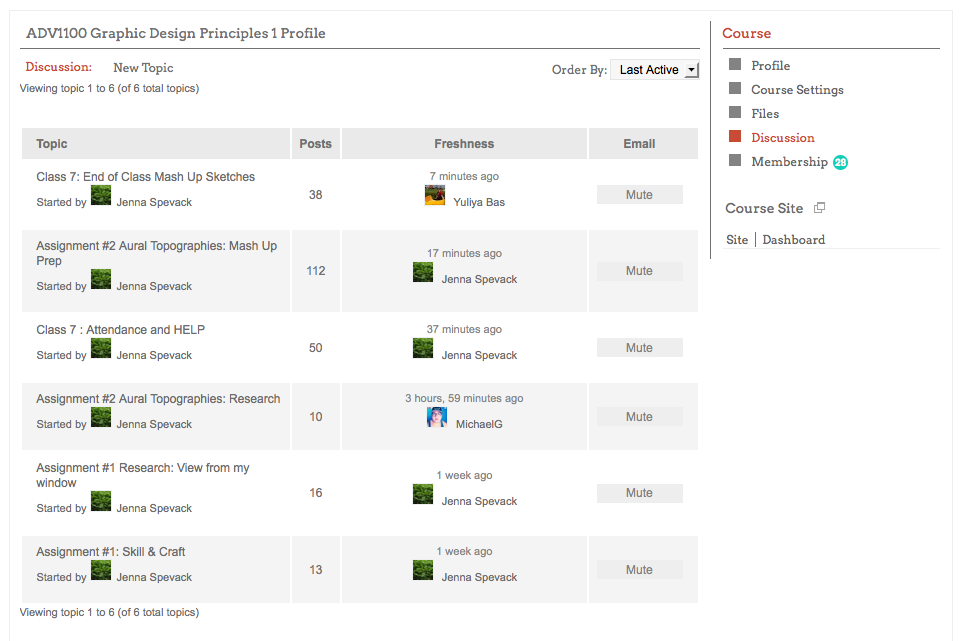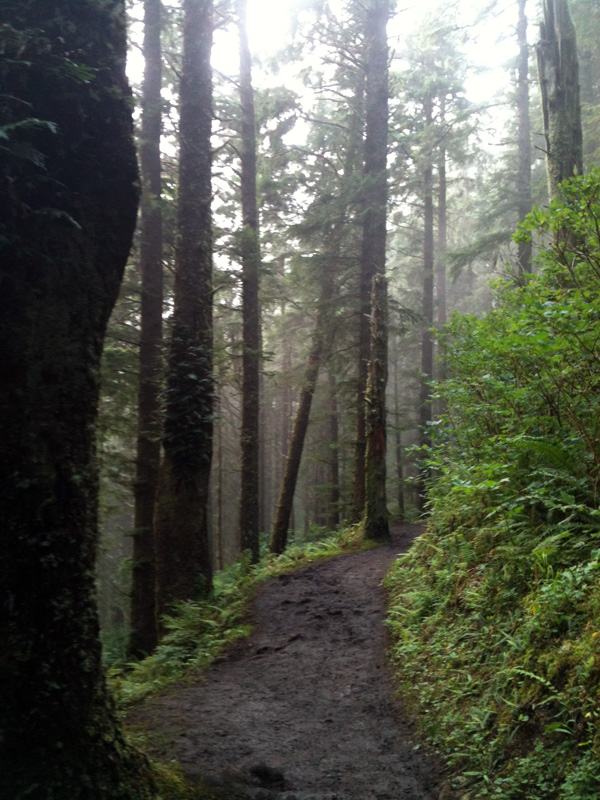Returning to teaching and service after a year-long sabbatical devoted to creative scholarship has been both challenging and invigorating. The key concepts I have brought back to inform my teaching and my service are sustainable innovation and community collaboration. I have tried to continue the momentum I found last year in the studio as I prepare for a solo exhibition at Mixed Greens gallery, NYC this coming spring/summer. It has been difficult to find a balance between teaching & service and scholarship.
TEACHING
Highlights:
- Integrating ecological design principles into pedagogy
- Developing a teachable Design Process for sustainable innovation
During the development of Emerging Media Technologies Program a few years ago, I incorporated a concentration called “Ecomedia” and wrote the University’s first course in Ecological Design. As part of my sabbatical, I tried to bring together the four areas of my life: artist, educator, design and advocate through new ecomedia projects, learning experiences, and exhibitions. I admit that I am a little stumped as to how to integrate the momentum from my own creative experience with ecological creative media into my teaching. Except for individual class projects, such as those that engage an environmental issue into a design project, I have yet to find a successful way to bring the synergy I finally achieved in my creative work to my classroom projects.
Sustainable innovation and community collaboration are the two areas that do have some overlap with my creative work and I have tried to translate these concepts into classroom pedagogy.
Sustainable Innovation: In my ADV1100 course I ask my students to follow a design practice, which incorporates the expectation of failure as part of the process of innovative design. This is alarming to most students many of whom are trained to avoid failure at all costs. I have found that expecting and embracing failure as part of the design process easily reduces the fear and increases the level of enjoyment. For students, that also means supporting a life-long love of learning and a love of creative effort for it’s own sake. I have observed students who are convinced that they cannot draw or are who unable to come up with a compelling concept, rise to the occasion when the iterative techniques are integrated into the project. When they are allowed the freedom to make multiple trials, there are no real mistakes and risks can be taken.
I am driven to make things. I enjoy the process, even more than the result. During the last two years while working on my “8 Extraordinary Greens” project I spent a great deal of time experimenting with materials and conceptual approaches to the project. The project itself contained elements at great risk for failure. The simple act of trying to keep plants alive in a gallery setting is a huge risk, but beyond that, trying to bring together these different interests into one project was also a risk. The project became part performance, part educational, part art installation. It was more than simply the act of making objects and installing them in a gallery. As someone who prefers to be behind the scenes (making drawings in my studio), I forced myself way outside my comfort zone.
Many students (and professionals too) suffer from a paralysis that prevents them from starting a new project or completing a work in progress. The fear of failure limits innovation. Pushing oneself outside of the comfort zone and making time and space for failure is one thing that will help sustain the creative process.
Finding ways to develop an individual’s creative process is a primary goal of my foundation classes. It is the one concept I hope they recognize as critical to their success as creative thinkers. Embracing failure as part of that process is essential.
Community collaboration is another part of the creative process that I try to bring to the classroom. Throughout the semester students are given collaborative projects that guide their research, iterative designs and final products. Without much coaxing they are able to see the value in this collaboration, especially in the beginning research stages of a project, whereas it can take experience, patience, and maturity to successfully realize a collaborative project.
Scholarship and Professional Growth
Highlights:
- Solo exhibition at Mixed Greens Gallery- reviews and exposure
- PSC-CUNY 42 Research Award for Birds of Brooklyn
- Group Exhibitions: Horsplay & Platte Cove
I wanted to direct my pedagogical efforts toward integrating ecological design principles and practices into the study of creative media design, but have recently realized that the first place to explore this effort is in my own studio. Having the extended, uninterrupted time to focus on this during my 2011-2012 sabbatical has been life changing.
For the last ten years my creative work has centered on the tenuous relationship between humanity and the natural world. I make drawings that reference biological processes, scientific theories, and human interactions as a way of examining the delicate balance of natural ecosystems and exploring the visible and invisible forces that create conflict when humans alter these systems.
Independent of my artistic practice, I studied ecological design and permaculture design practices and devoted volunteer hours to community, urban agriculture projects and environmental advocacy events.
With the goal of integration in mind I began to develop creative projects that bring together the seemingly disconnected areas of my life (art practice, ecological/permaculture design, environmental advocacy, and education) into one creative effort.
While on sabbatical during the 2010-2011 academic year, I began experimenting with growing food in my small Brooklyn apartment and on a slightly larger scale in my art studio. I wanted to spend more of my time growing my own food and perhaps growing it for others. I wanted to experiment with a different type of exchange system, where I could sell greens by donation and explore, through my artistic practice, the value placed on food and community. Lastly, I wanted to share this knowledge with others. By converting furniture objects into food growing systems, I developed the “domestic microfarm” – an efficient system for growing microgreens in small urban environments.
This research grew into a project called “8 Extraordinary Greens” and culminated in a well-received, solo exhibition at Mixed Greens gallery in the gallery district of NYC from May 3 – June 2, 2012. Reviews in the press included: PBS’s Art21, GOOD, Grist, Hyperallergic, NY Post, Treehugger, Fast Company, Inhabitat, among many others.
One goal of this exhibition was to encourage visitors to think about the value of their creative efforts, be it growing food, community and educational efforts, or art making. The exhibition and the project received so much press from so many different types of media angles (urban farmer, artist, environmental advocate, educator) that I felt that the exhibition successfully integrated all of my creative efforts while effectively collaborating with a range of communities.
Additionally, I received a $3500.00 PSC-CUNY 42 Research Award for my on-going community-based audio project, Birds of Brooklyn and was invited to participate in two group exhibitions: Horsplay, University of Buffalo (catalog) & Platte Clove Artists, Erpf Gallery, Arkville, NY.
Service
Highlights:
- OpenLab Co-Director
- Title V Grant – Living Lab
My experience with my “8 Extraordinary Greens” exhibition has also enhanced my view of the value of community collaboration in creative media projects. As a fine artist (and introvert) who is most comfortable “doing it all herself,” partnering with community groups and colleagues on this project was an eye opening experience and essential for realization of the project.
One of the goals of City Tech’s OpenLab is utilizing an open source platform – a community-focused approach to development. With the aim of encouraging openness: sharing and critiquing of ideas and working together to further a project or goal, the OpenLab is a wonderful example of community collaboration. As Co-Director with Jody Rosen, I focus on the architecture, design and development of the platform. We look not only to our internal development team, but to OpenLab users (faculty, students and staff), members of the University who are working on similar projects, and members of the Open Source WordPress and BuddyPress communities for inspiration, support, and innovative suggestions to make the project the best it can be. We shared case studies and lessons learned in our first semester at the CUNY IT Conference this year and highlighted future plans to continue to foster connections and strengthen the intellectual and social life of the City Tech community.
It has been a joy to work in this collegial supportive environment. I look forward to continued participation in this five-year initiative funded by a $3.1M grant awarded to City Tech under the U.S. Department of Education’s Strengthening Hispanic-Serving Institutions (Title V) program. I’m excited to see how OpenLab grows and evolves.


